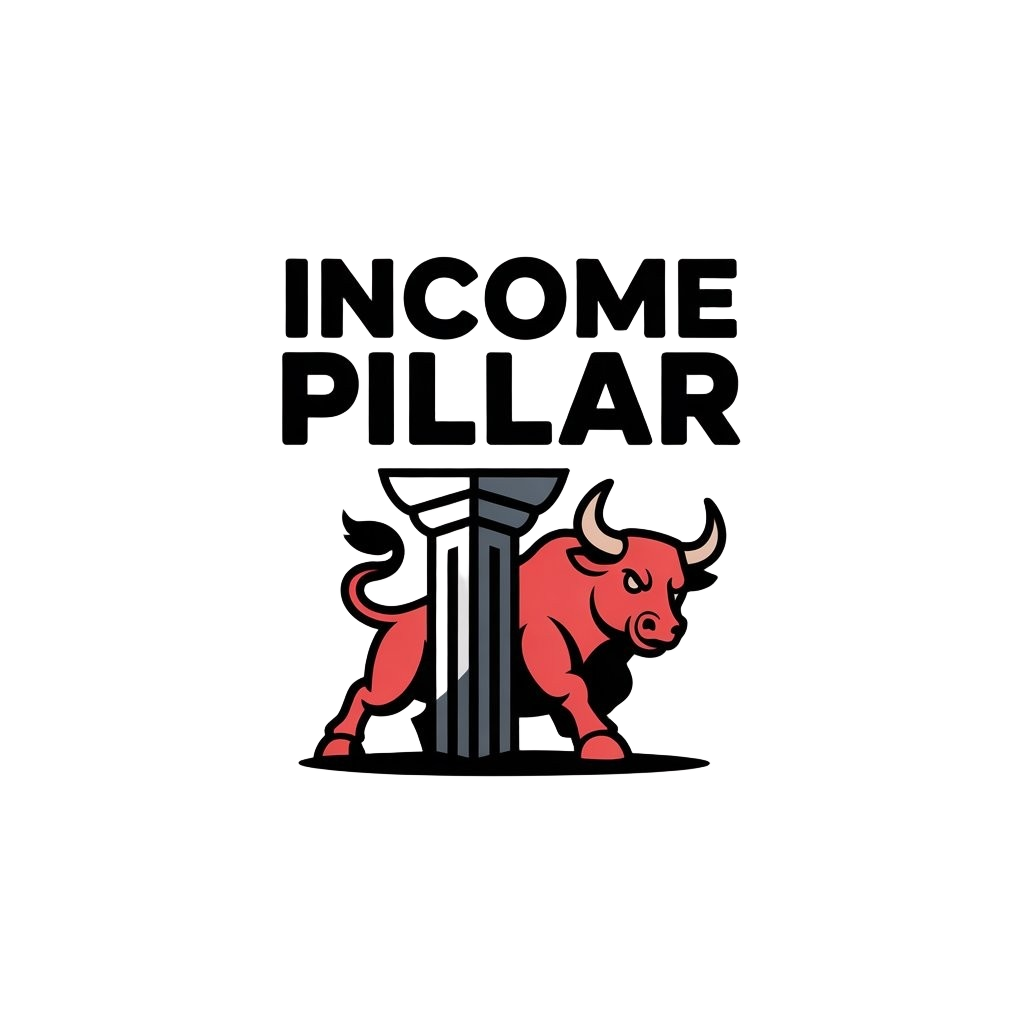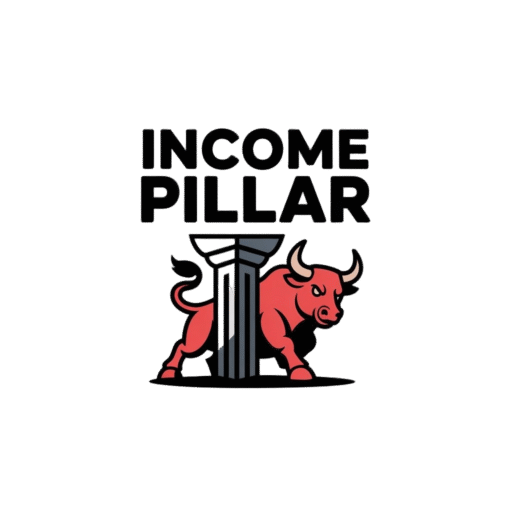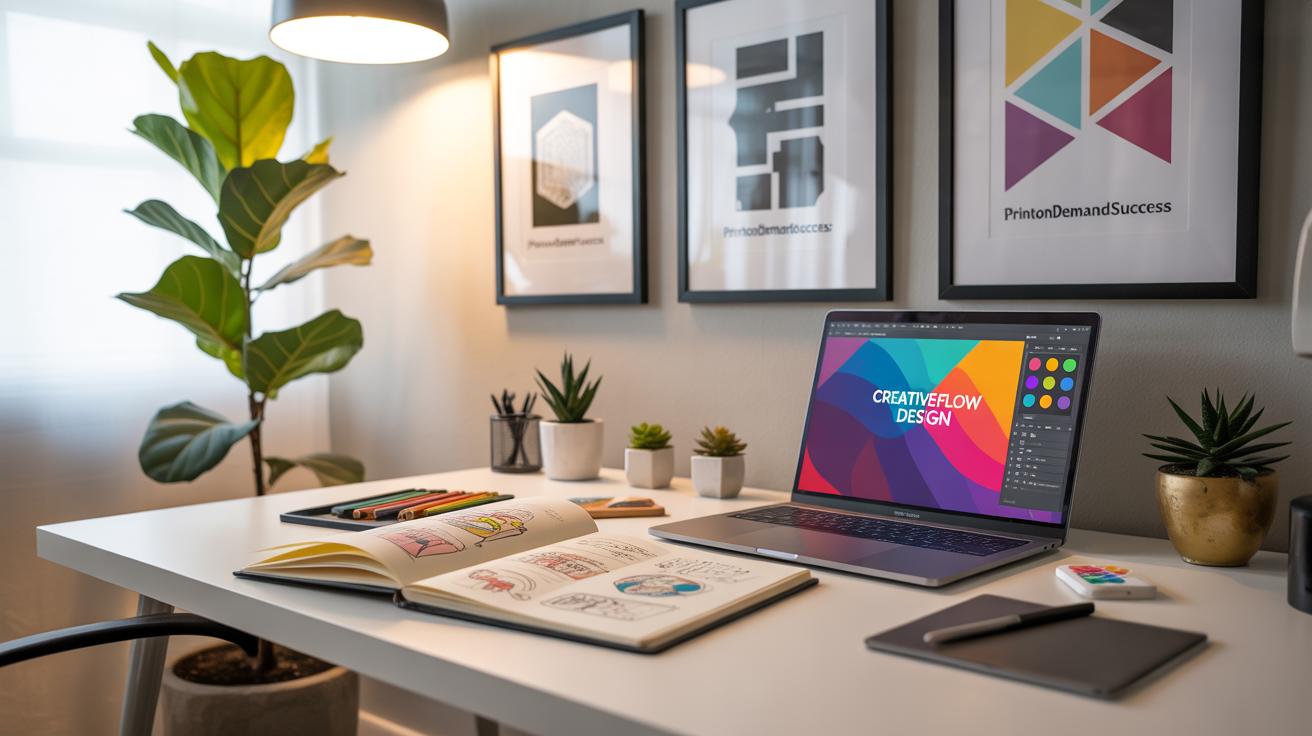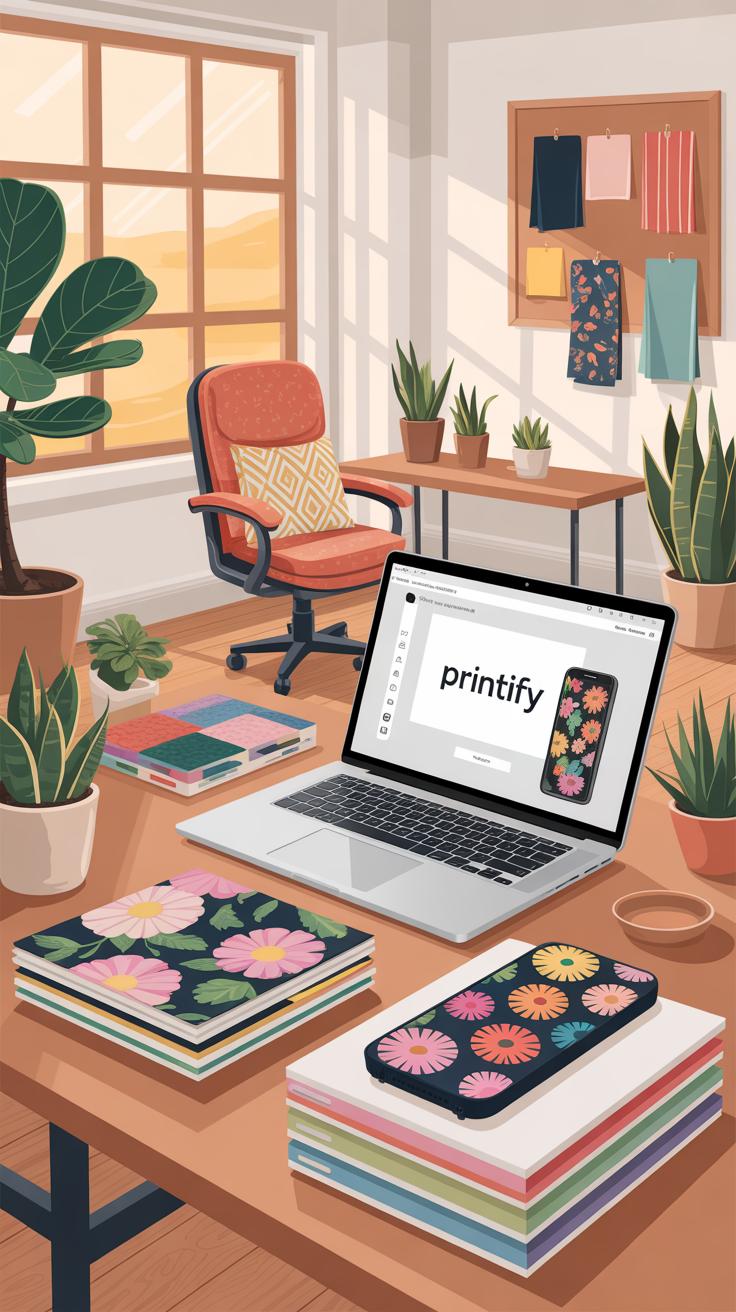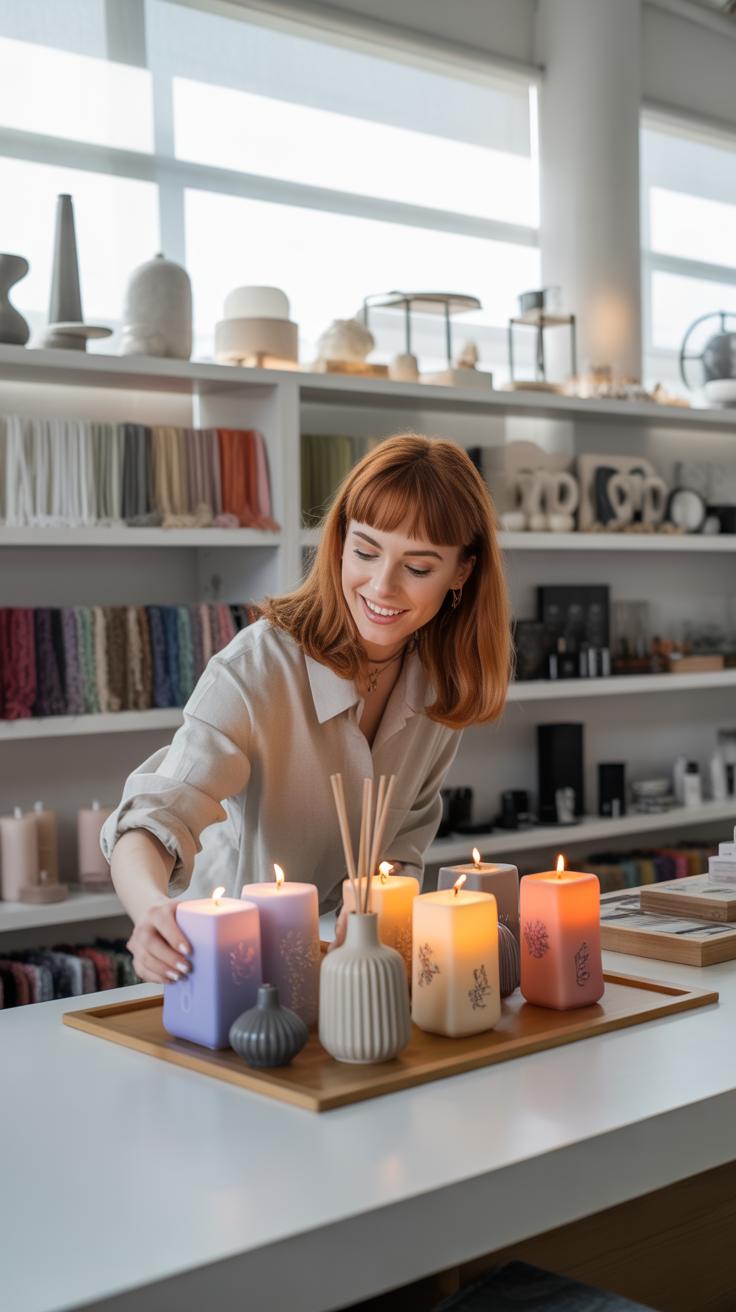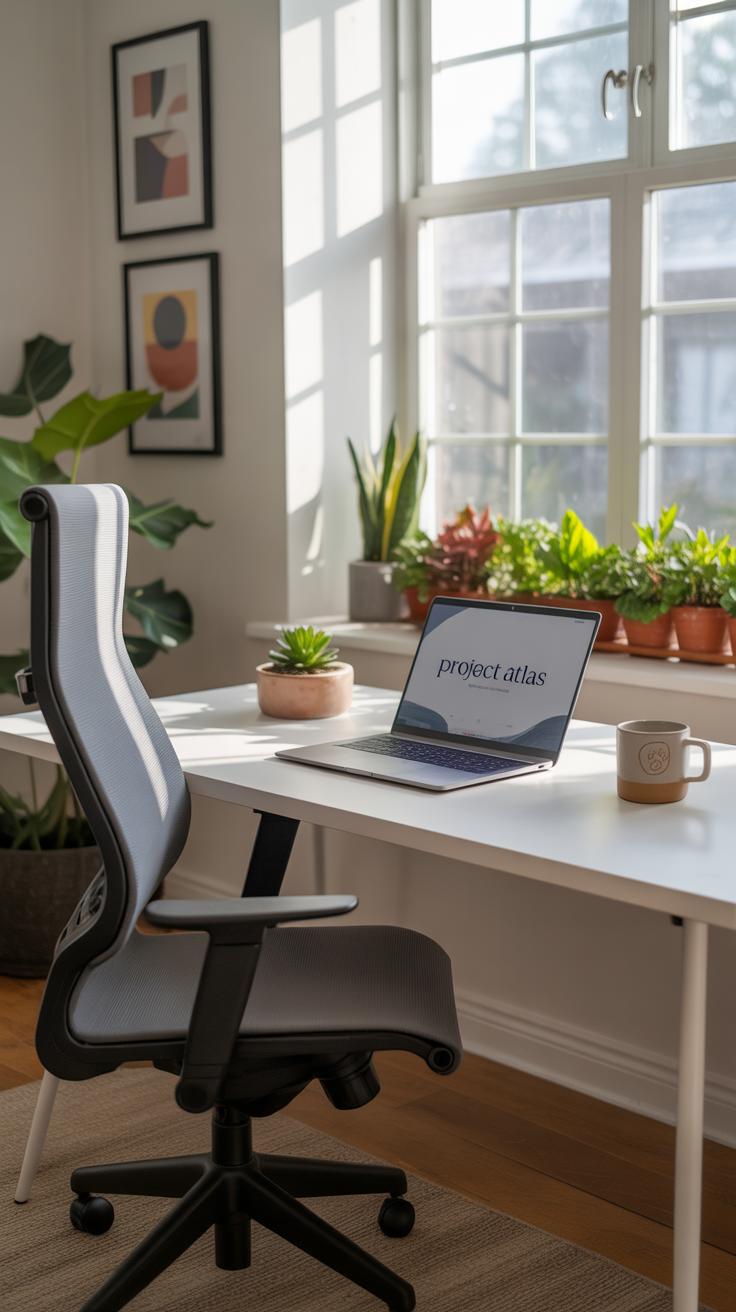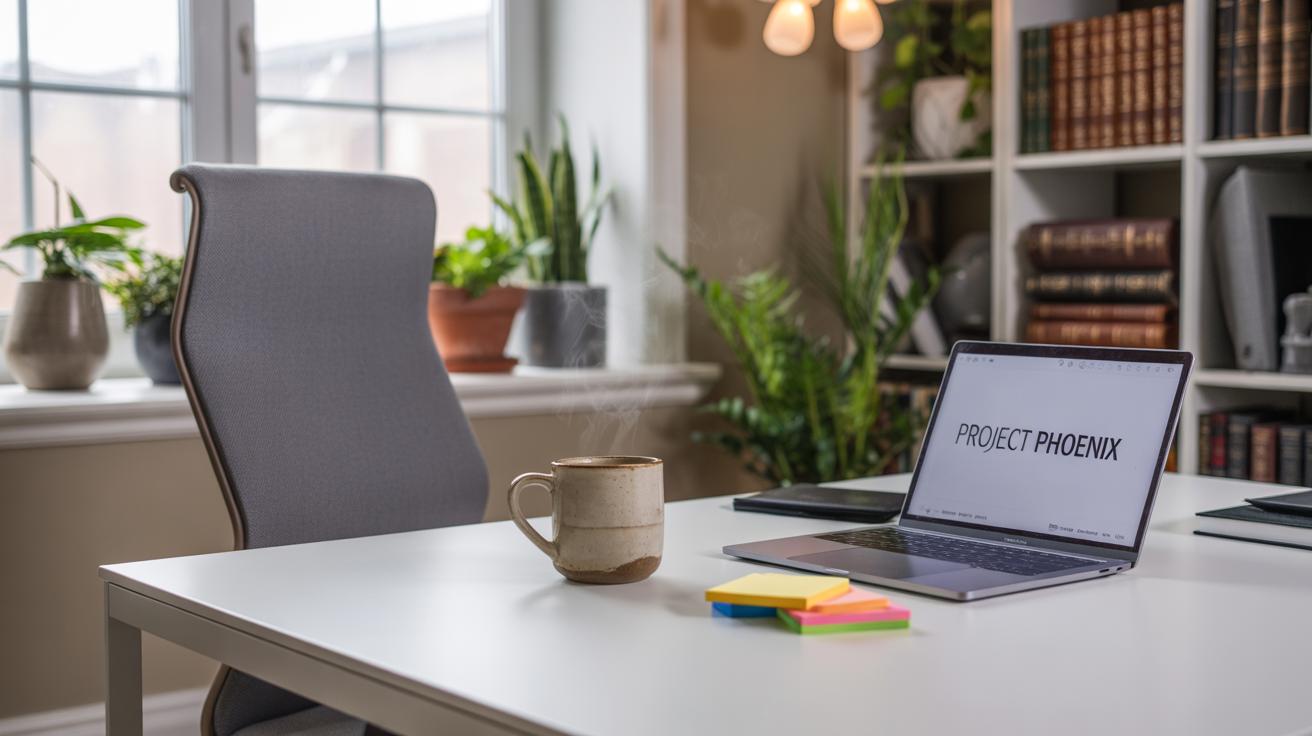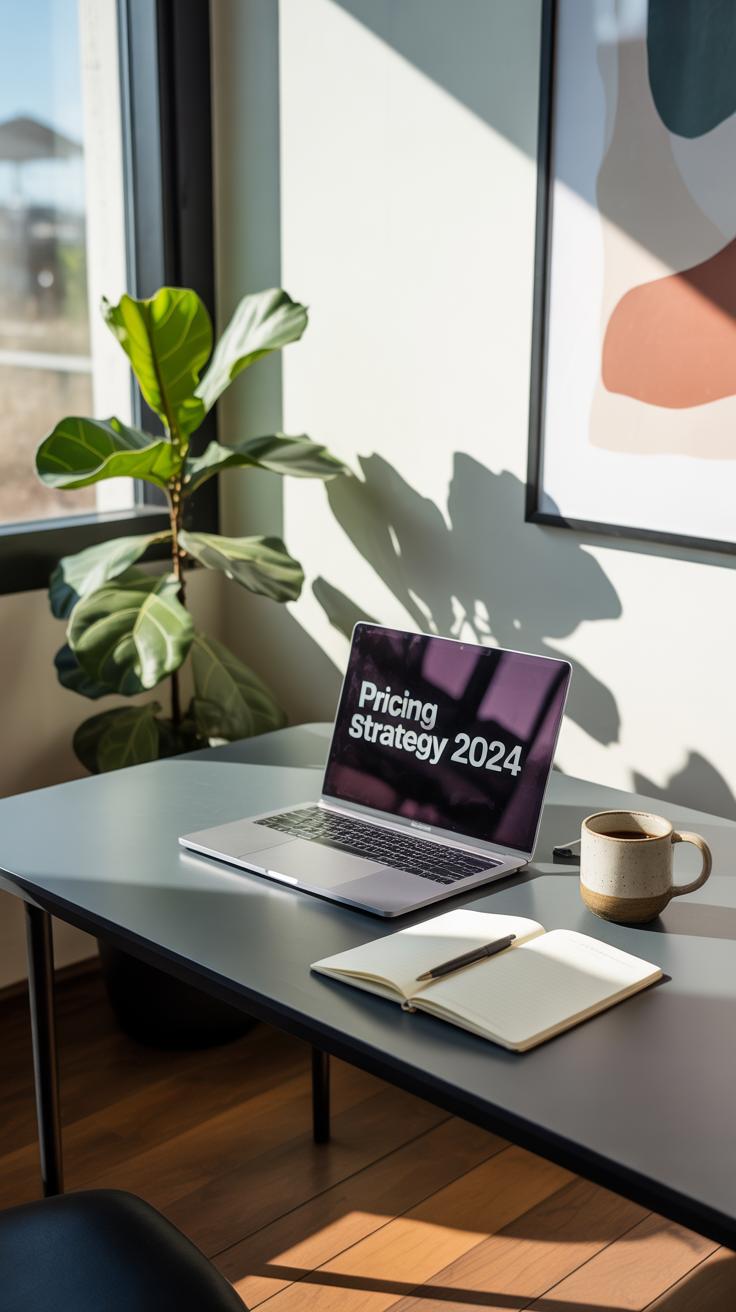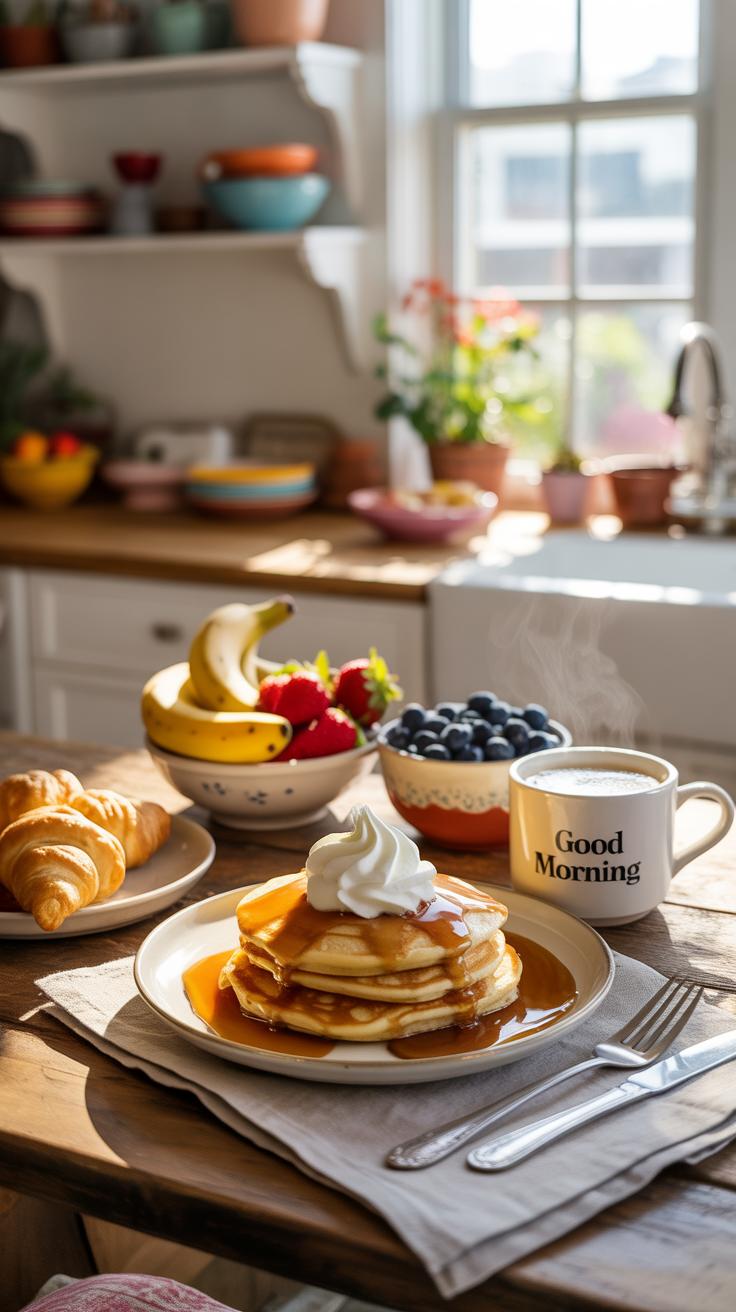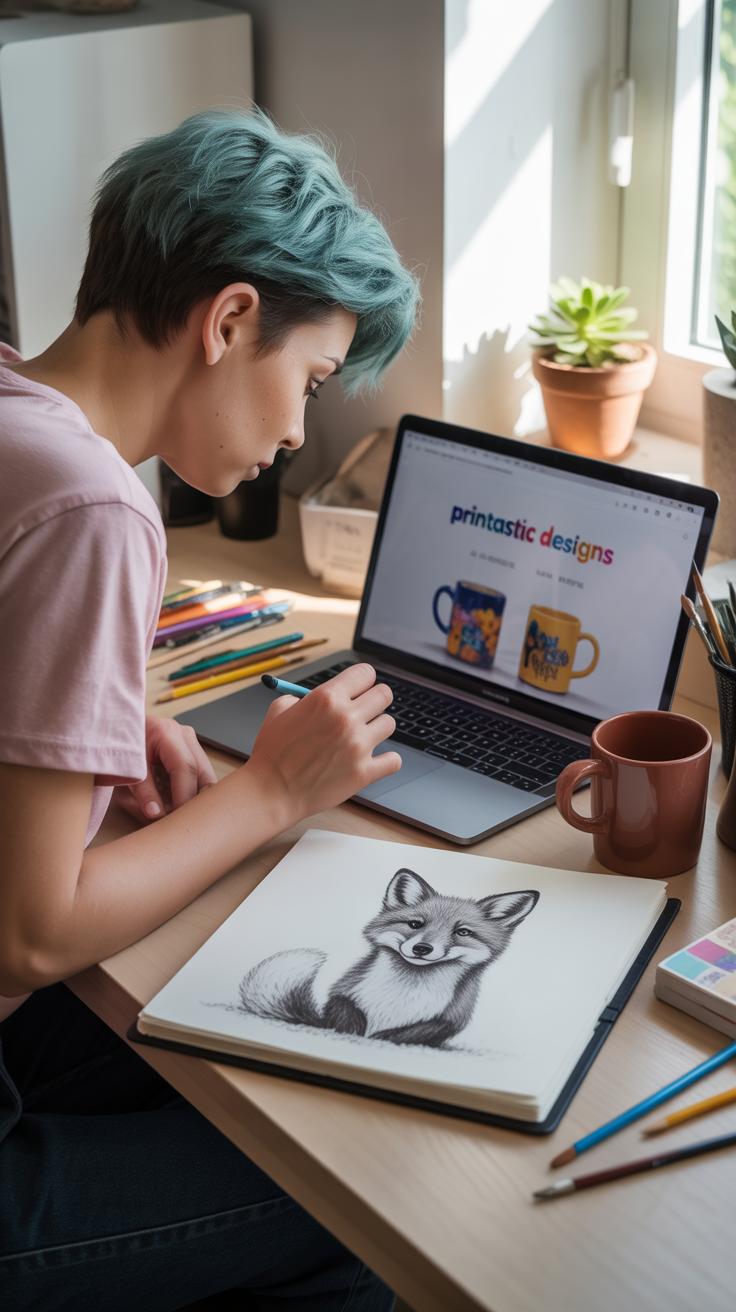Introduction
Print on demand lets you create and sell your own products without needing to store a lot of stock. This method uses digital printing technology to print items only when an order is placed. It is a smart way to start a business or earn extra income with low upfront costs.
In this article, you will learn how print on demand works, what kinds of products you can make, and how to set up your own store. We will cover practical steps, from choosing products to marketing your designs. By the end, you will know how to turn your ideas into profitable products.
Understanding Print On Demand
Print on demand, or POD, is really about printing products only after a customer places an order. You don’t stockpile inventory. Instead, every item is made fresh, tailored to what someone wants at that moment. This approach is quite different from traditional printing where businesses often produce large batches, hoping to sell them later.
The idea isn’t new. It started gaining traction in the 1990s when digital printers became more accessible. Before that, printing was mostly offset or screen printing—methods that are costly and slow for small runs. POD changed the game by allowing single-copy printing without big upfront costs.
The technology behind POD mainly involves digital printing. Instead of plates or screens, digital presses use files—usually PDFs or similar—and print directly onto materials. This means you can customize each product without setting up machinery over and over again.
Digital printing differs from older methods by handling short print runs more cheaply and quickly. It’s precise and flexible but might not match the speed or cost-effectiveness of bulk traditional printing if you print thousands of items at once. Still, for your own small-scale business, it makes starting up less intimidating and more manageable.
Think about it—do you really need to hold piles of inventory, risking unsold products? POD lets you avoid that entirely. You focus on design and marketing, letting the printing happen only when an actual sale comes through. There’s something satisfying about that, even if it feels a bit uncertain at times.
Choosing Products To Sell
Picking the right products for print on demand isn’t always straightforward. You might feel tempted to choose what you like, but your audience’s preferences should shape your choices more. Think about what sells well and what people use daily. T-shirts, for example, remain a go-to item. They are wearable, easy to design, and almost everyone owns a few. Mugs are another favorite—simple, functional, and perfect for showcasing quirky or inspiring quotes. Then there are books, like journals or planners, which offer a bit more room for creativity and can attract niche markets.
Other popular options include tote bags, phone cases, and posters. Each has a specific appeal. Tote bags tap into eco-conscious buyers, phone cases attract tech-savvy customers, and posters appeal to home decorators. Why these? Because they mix usefulness with personalization, and that’s where print on demand shines.
Now, before settling on a product, try to find your niche. Ask yourself: Who do you want to reach? What interests do they have? For example, if your target is runners, custom water bottles or athletic tees might work better than mugs. If you want to cater to book lovers, maybe focus on notebooks with literary quotes or unique cover art. The trick is to align the product’s use with your audience’s lifestyle.
Choosing a niche makes your marketing easier, too. You speak directly to people who find value in your products. This approach often beats a broad “everyone and anyone” strategy, which can feel aimless and scatter your efforts. So take a moment to think about who your customers are or could be. What problems do they have? What do they enjoy? Starting there guides you toward products that won’t just sit on virtual shelves collecting dust.
Setting Up Your POD Store
Starting your online print on demand store begins with choosing where to sell. There are several platforms geared towards POD, but picking one depends on what fits your style and goals. Popular choices include Shopify, Etsy, and sometimes Printful’s own storefront options. Each handles things a bit differently, so it’s useful to weigh what matters most to you—ease of use, audience size, customization, or fees.
Creating an account usually involves just a few steps: sign up with your email, set up basic store info, and link payment details. For Shopify, expect a short setup wizard that walks you through adding products, choosing templates, and connecting to POD providers like Printful or Printify. Etsy’s approach feels more marketplace-like; you open a shop, list items, then sync POD print files after. Sometimes it’s slightly confusing, but not too bad once you get the hang of it.
Uploading designs tends to be pretty straightforward but varies a bit by platform. Usually, you upload your artwork files directly to the product template—like a t-shirt or mug—and the system shows you a preview. You can adjust placement or sizing before finalizing. Managing your designs means keeping your store organized and updating visuals regularly, which can be a bit tedious if you add many items at once. But it’s doable, and remembering to preview carefully helps avoid surprises.
Creating Designs That Sell
When it comes to print on demand, your designs really need to grab attention. But that doesn’t mean you should cram in every idea at once. Simple graphics with clear messages often perform better. Think bold shapes or icons paired with a few words that express something meaningful or relatable. Sometimes less is more—though, oddly, that concept can feel tricky to apply when you have lots of ideas!
For beginners, starting with basic tools makes a big difference. Free platforms like Canva or GIMP offer plenty of features without overwhelming you. You can experiment with fonts, colors, and layering without needing advanced skills. If you want to try paid options, places like Adobe Spark and Affinity Designer come with more polish, but the learning curve is steeper. Don’t worry if your first few designs feel rough; practice helps, and seeing what works on your store can guide tweaks.
Understanding what customers want is crucial — and maybe the hardest part. You might guess that certain themes sell well or find trends online. Looking at top-selling items on POD sites helps you spot patterns. Social media and forums where your target audience hangs out can give clues, too. Are they into funny slogans? Inspirational quotes? Minimalist art? Adapt your designs based on what you see, but remember, tastes change. A design that’s hot now might cool off soon, so keep an eye out and be ready to adjust.
Marketing Your POD Products
Using Social Media
Social media platforms like Instagram, Facebook, and TikTok can really help get your print on demand products in front of people. Each platform is different, so it’s useful to tailor your approach. For example, Instagram is great for visually appealing images—think product photos styled with some personality. You don’t need a fancy setup; natural lighting and clear shots often work best. Sharing behind-the-scenes glimpses of your design process or packaging can also engage followers.
Facebook groups related to your niche are another spot worth exploring. They may not have millions of users, but the people there tend to be highly interested in specific themes, which might match your products. TikTok often surprises me with how quickly something can spread. Short videos showing your product in use, or even a quick peek at how you create it, can grab attention. And don’t forget to interact—reply to comments, join conversations, and create polls to keep your audience involved.
Paid Ads And Promotions
Running paid ads can feel a bit intimidating at first, but it doesn’t have to be complicated. Start small and experiment. Facebook Ads Manager is user-friendly enough for beginners. Pick a clear goal—do you want traffic, sales, or awareness? Then, focus on your target audience. Think about who would want your product: their age, interests, location. You might find that narrowing down these details helps your ads spend money more wisely.
Promotions also work well, especially if you can tie them to an event or a season. Offering a small discount or free shipping can gently nudge someone who’s on the fence. Tracking the results is key here—see what kind of ad or promotion brings more clicks or purchases, then build from there. It’s a bit of trial and error, honestly, but with time, you’ll recognize what clicks with your audience.
Managing Orders And Customers
Order Fulfillment Process
When an order comes in, the print on demand service takes over most of the heavy lifting. They print your design on the chosen product, like a t-shirt or mug, then pack it carefully for shipping. This process usually starts within a day or two after the order is placed, which can feel fast, but sometimes it depends on the vendor’s workload.
You don’t have to handle inventory or shipping yourself—that’s the appeal. Still, tracking orders regularly helps you stay in the loop. Most POD platforms update you with shipping info and sometimes even provide tracking numbers to share with your customers. If delays happen, which they sometimes do, you’ll want to check in promptly and keep buyers informed to avoid frustration.
Customer Service Tips
Keeping customers happy is part of building trust and repeat business. When questions or problems come up—say, a print isn’t quite right or a package is lost—respond quickly and clearly. You might not always know the full answer immediately; that’s okay. Just let them know you’re looking into it.
- Answer questions politely and avoid jargon.
- Offer refunds or replacements if necessary, but remember to check your POD provider’s policy first.
- Be honest about timelines, even if it means admitting a delay.
- Use simple, friendly language—sometimes a little empathy helps more than a formal tone.
Thinking about it, sometimes a quick “Thank you for your patience” works wonders. Have you noticed how a little kindness can turn a frown into goodwill? It’s not always easy, but handling problems with care makes a difference.
Costs And Pricing Strategies
Figuring out how much to charge for your print-on-demand products can feel like a bit of a balancing act. You want to cover all your costs, sure, but you also have to keep prices appealing enough for buyers. This means knowing exactly what your expenses are and then choosing a pricing model that fits your goals.
Calculating Costs
Start by listing every expense involved:
- Printing costs – usually set by your print-on-demand supplier;
- Shipping fees – can vary based on location and product size;
- Platform or marketplace fees – like Etsy, Shopify, or Amazon;
- Transaction fees – payment processors often take a cut;
- Any taxes or customs duties, if applicable.
It’s easy to miss small fees that chip away at your margin. You might think printing is the only big cost, but once shipping and fees pile up, your profit can shrink quickly. Sometimes I underestimated shipping when starting, which forced me to rethink prices mid-way.
Pricing Models
There’s no one-size-fits-all when it comes to pricing, and you might find yourself experimenting:
- Cost-plus pricing: Add a fixed markup over your total costs. Simple but can feel rigid.
- Value-based pricing: Price based on what customers are willing to pay, not just costs. Riskier but can yield better profits.
- Competitive pricing: Set prices similar to or just below competitors. Can help with sales but might squeeze margins tight.
Sometimes mixing approaches works best. For example, I started with cost-plus but adjusted some designs to higher prices after seeing customer interest. Asking yourself questions like “How unique is my design?” or “Am I targeting budget or premium buyers?” can guide your choices.
Overall, your pricing has to flex with costs, competition, and demand. The trick is to keep revisiting it and not stick rigidly to one formula.
Growing Your Print On Demand Business
Adding More Products
At some point, you’ll want to expand your product line. But when? It’s tricky. Adding new products too soon might spread your focus too thin. Waiting too long might slow down growth. A good rule of thumb might be to watch which designs and items sell best, and then introduce related products. For example, if your T-shirts with funny quotes are doing well, maybe try mugs or tote bags with similar designs.
Look for product gaps your current customers might want. Don’t add too many at once—pace yourself. Launching just a couple of new items each month can keep your store fresh while staying manageable.
Keep an eye on trends, but don’t jump at every fad. Make sure new products fit your brand’s style; otherwise, things get confusing. You want to build a coherent offering people recognize and trust.
Building Customer Loyalty
Getting customers once is good, but getting them back—that’s key. Think about the experience you create after a purchase. Quick response to questions, smooth order handling, and follow-up messages can help.
Email newsletters or small thank-you notes can make a difference. Maybe offer discounts for return buyers or early access to new designs. These little touches build loyalty. They don’t have to be expensive, just thoughtful.
Engagement goes both ways. Ask for feedback, share behind-the-scenes glimpses, or invite your customers to suggest designs. People like feeling involved. It turns a simple sale into a relationship—and repeat business often comes from relationships.
Common Challenges And How To Solve Them
Design And Quality Issues
Ensuring your designs look good on products can be tricky. Sometimes a graphic seems perfect on your screen but falls flat once printed. That’s why order samples early on. Seeing the actual product helps spot colors that don’t pop or details that blur. Don’t just rely on your monitor; printers vary, and what looks sharp digitally might turn out muddy in print.
When creating designs, stick to high-resolution files—300 dpi is the usual standard. Avoid tiny fonts or overly complex images that might get lost on smaller items like mugs or phone cases. Also, keep in mind your product’s color baseline; bright reds on a black tee might look dull after printing.
Quality matters. Choose POD suppliers known for consistent results. If you catch wear issues or poor fabric, switch providers or update your product listings. One funny thing I noticed: a friend’s sweatshirt design faded quickly because he overlooked the material type. Test materials yourself to avoid surprise returns.
Handling Shipping Delays
Shipping delays happen, even in print on demand. Sometimes weather or busy seasons slow deliveries. It’s frustrating, but you can’t always control it. What you *can* do is keep customers in the loop. Communicate clearly on your store’s shipping times and update them if a delay pops up.
Automated tracking emails help, but personal touches matter too. If a package runs late, send a quick message explaining the situation. It reduces customer frustration and builds trust. I’ve seen sellers who ignore delays lose more customers than those who acknowledge issues straight away.
Consider choosing POD services with warehouses near your main customer base to cut transit time. And don’t forget to build a little buffer into your estimated delivery dates—better to surprise customers with early arrival than with an excuse later.
Future Of Print On Demand
Print on demand is quietly shifting in some surprising ways. You might expect slow, steady growth, but new technologies and changing markets suggest something a bit more unpredictable. Digital printing is improving all the time, especially with advances like dye-sublimation and direct-to-garment that deliver finer details and faster turnaround. These tools are becoming more accessible, which means quality products at lower costs—you get better prints on everything from apparel to home décor.
What really caught my eye lately is the rise of automation software. Some platforms now offer design generators or AI tools that assist in creating unique products faster. You might wonder if this takes away creativity, but it can also open doors to quicker experimentation with new designs or variations without much extra work.
Besides tech, new niches seem to be appearing. Think about eco-friendly products or personal wellness items with custom prints. Personalization is evolving beyond just names or slogans. Sellers are exploring local themes, specialized hobbies, and even small industries needing branded merchandise without big minimum orders.
Could the growing demand for merchandise tied to digital communities or influencers become a mainstay? Possibly. It’s one of those spaces where print on demand blends with culture and tech in ways that feel fresh and not totally figured out yet. You might want to keep an eye on those trends because they could shape your next move in this field.
Conclusions
Print on demand offers a flexible way to create and sell custom products. It removes the need for large inventory and upfront investment, making it easier for anyone to start their own business. Through digital printing, you can bring your ideas to life quickly and meet customer demands.
With careful planning and creativity, you can grow a steady income from your own designs. Focus on quality, marketing, and customer service. Think about what your customers want and offer products that meet their needs. Print on demand unlocks many opportunities for your personal and financial growth.
